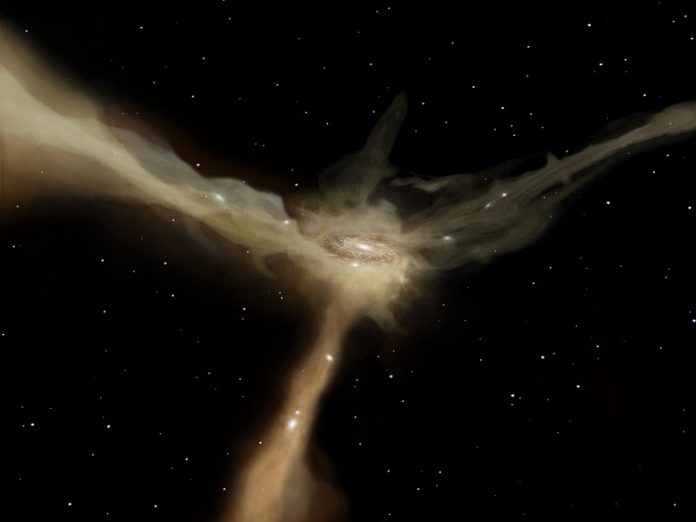
How do you weigh one of the largest objects in the entire universe? Very carefully, according to new research.
The cosmic web is the largest pattern found in nature.
It is made of galaxies the same way your body is made of cells…if your cells were a million times smaller than they are.
It is truly gigantic, with its individual parts stretching for millions of light-years at a time.
The intricate filaments of the cosmic web are made of hundreds of thousands of galaxies stretching hundreds of thousands of light-years between the clusters.
They are like super highways, connecting one cluster to another.
Cosmologists aren’t just interested in the cosmic web because it’s pretty. It also encodes vital information about the universe.
It has been growing for over 13 billion years and its properties are closely tied to the nature of dark matter and dark energy. If you change how much dark matter is in the universe or vary the strength of dark energy, then you can end up with radically different cosmic web patterns.
However, most of that information about dark matter and dark energy is very difficult to extract. This is because the cosmic web itself is a very complex structure.
When it comes to the filaments, their width, length, and density all respond to the nature of dark matter and dark energy.
But we have a very difficult time measuring those properties because most of the filaments are made of invisible dark matter.
Using a suite of simulations that tracked the evolution of both galaxies and dark matter, a team of researchers have developed a technique for weighing these giant filaments.
The technique relies on the relationship between the amount of dark matter and the motion of galaxies within the filament.
All galaxies are moving, and some of them are moving in our direction and some are moving further away.
The researchers found that there was a close relationship between the spread in these velocities and the amount of dark matter within that section of the filament. In other words, the higher the average speed of the galaxies, the more mass contained in the invisible dark matter.
This means that we can potentially go out and map filaments, measuring the spread ingGalaxy velocities along the length of those filaments, and map that result onto the mass of the underlying filament.
This is just the beginning of the new approach. The next step is to connect the filament mass to the properties of dark matter and dark energy, and then see if we can go out in the universe and learn something new.
Written by Paul M. Sutter/Universe Today.



